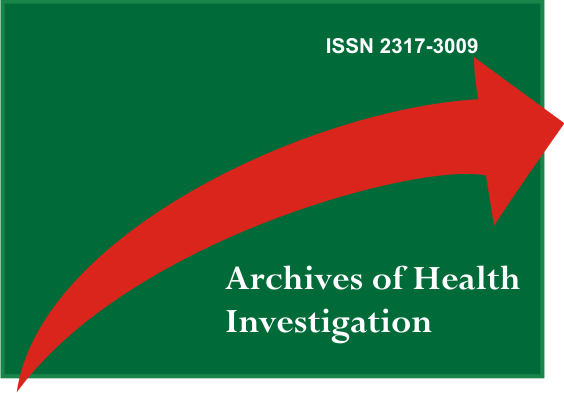Alteração Dimensional do Espaço Aéreo após Cirurgia Ortognática: Relato de Caso
Resumo
O padrão ouro no tratamento dos pacientes com deformidades dento-faciais é a cirurgia ortognática, que resulta, tanto em melhorias funcionais quanto estéticas aos pacientes. A movimentação cirúrgica dos maxilares produz alterações nos tecidos moles do complexo orofacial. Muitos estudos têm mostrado ainda, mudanças craniofaciais e alterações dimensionais das vias aéreas após cirurgias de avanço e recuo dos ossos maxilares ou da própria rotação do plano oclusal, relacionando-se diretamente com o tensionamento da musculatura suprahioidea e hipoglossal. Portanto, o objetivo deste artigo é relatar um caso onde se pode observar as alterações no espaço aéreo, por meio da telerradiografia em norma lateral, após cirurgia ortognática de rotação anti-horária do complexo maxilo-mandibular.Palavras chave: Cirurgia Ortognática; Sindrome da Apnéia do Sono; Intensificação de Imagem Radiográfica.
Downloads
Referências
Abramson ZR, Susarla S, Tagoni JR, Kaban L. Three-dimensional computed tomographic analysis of airway anatomy in patients with obstructive sleep apnea. J Oral Maxillofac Surg. 2010; 68(2): 363-71.
Abramson Z, Susarla S, August M, Troulis M, Kaban L. Three-dimensional computed tomographic analysis of airway anatomy in patients with obstructive sleep apnea. J Oral Maxillofac Surg. 2010; 68(2): 354-62.
De Ponte FS, Brunelli A, Marchetti E, Bottini DJ. Cephalometric study of posterior airway space in patients affected by Class II occlusion and treated with orthognathic surgery. J Craniofac Surg. 1999; 10(3): 252-9.
Remmers JE, deGroot WJ, Sauerland EK, Anch AM. Pathogenesis of upper airway occlusion during sleep. J Appl Physiol. 1978; 44(6): 931-8.
Schwab RJ, Goldberg AN. Upper airway assessment: radiographic and other imagining techniques. Otolaryngol Clin North Am. 1998; 31(6): 931-68.
Lowe AA, Ono T, Ferguson KA, Pae EK, Ryan CF, Fleetham JA. Cephalometric comparisons of craniofacial and upper airway structure by skeletal subtype and gender in patients with obstructive sleep apnea. Am J Orthod Dentofacial Orthop. 1996; 110(6): 653-64.
Tsuchiya M, Lowe AA, Pae EK, Fleetham JA. Obstructive sleep apnea subtypes by cluster analysis. Am J Orthod Dentofacial Orthop. 1992; 101(6): 533-42.
Jamieson A, Guilleminault C, Partinen M, Quera-Salva MA. Obstructive sleep apneic patients have craniomandibular abnormalities. Sleep. 1986; 9(4): 469-77.
Salles C, Campos PS, de Andrade NA, Daltro C. Obstructive sleep apnea and hypopnea syndrome: cephalometric analysis. Braz J Otorhinolaryngol. 2005; 71(3): 369-72.
Mehra P, Downie M, Pita MC, Wolford LM. Pharyngeal airway space changes after counterclockwise rotation of the maxillomandibular complex. Am J Orthod Dentofacial Orthop. 2001; 120(2): 154-9.
Liukkonen M, Vähätalo K, Peltomäki T, Tiekso J, Happonen RP. Effect of mandibular setback surgery on the posterior airway size. Int J Adult Orthodon Orthognath Surg. 2002; 17(1): 41-6.
Goncalves JR, Buschang PH, Goncalves DG, Wolford LM. Postsurgical stability of oropharyngeal airway changes following counter-clockwise maxilla mandibular advancement surgery. J Oral Maxillofac Surg. 2006; 64(5): 755-62.


